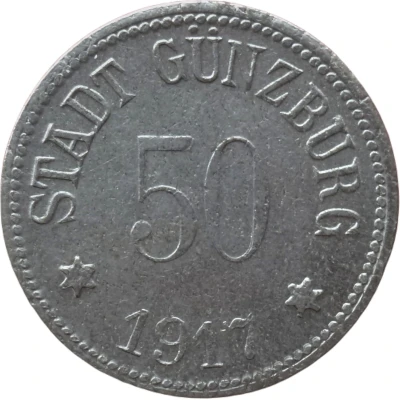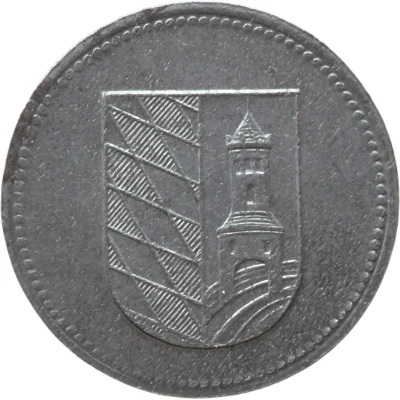


© Willem63 (CC BY-NC-SA)
50 Pfennigs - Günzburg
1917 year| Iron | 3.2 g | 22.4 mm |
| Issuer | City of Günzburg (Federal state of Bavaria) |
|---|---|
| Emperor | William II (Wilhelm II) (1888-1918) |
| Type | Standard circulation coin |
| Year | 1917 |
| Value | 50 Pfennigs (50 Pfennige) (0.50) |
| Currency | Mark (1914-1924) |
| Composition | Iron |
| Weight | 3.2 g |
| Diameter | 22.4 mm |
| Thickness | 1.2 mm |
| Shape | Round |
| Technique | Milled |
| Orientation | Medal alignment ↑↑ |
| Demonetized | Yes |
| Updated | 2024-10-04 |
| Numista | N#311856 |
|---|---|
| Rarity index | 93% |
Reverse
Beaded rim surrounding Coat of Arms centered
Edge
Plain
Interesting fact
One interesting fact about the 50 Pfennigs - Günzburg 1917 coin is that it was issued during a time of economic turmoil in Germany, known as the "Inflationary Period" (1914-1923), when the value of the German mark was rapidly decreasing due to the country's involvement in World War I and the subsequent economic crisis. As a result, many different types of coins were issued during this time, including the 50 Pfennigs coin made of iron, which was a cheaper alternative to traditional metals like silver or gold. This coin, in particular, was issued by the City of Günzburg in the Federal state of Bavaria and features a unique design that sets it apart from other coins issued during this time.